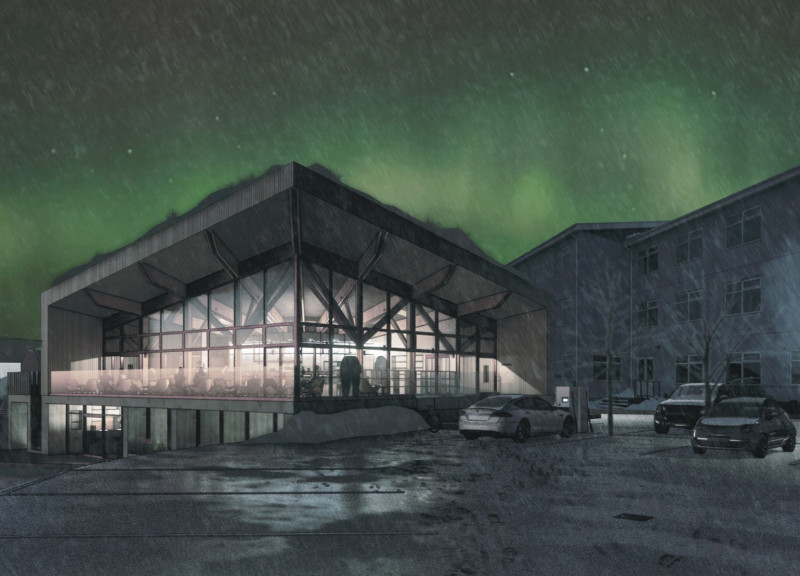5 key facts about this project
At its core, the project serves as a multipurpose space that caters to [insert usage, e.g., community events, educational functions, or recreational activities], promoting social interaction and facilitating a sense of belonging among its users. The design intelligently responds to the specific requirements of this function, providing flexible spaces that can adapt over time to meet different needs. The layout showcases an open-plan configuration, encouraging fluid movement and interaction among occupants, while strategically placed elements create zones for more intimate gatherings, allowing for both socialization and reflection.
The exterior of the building features a façade that skillfully employs a mix of materials, including reinforced concrete, glass, weathered steel, and sustainable wood. The use of these materials not only contributes to the visual appeal but also underscores a dedication to durability and long-term performance. Large expanses of glass serve to invite natural light into the interior, fostering a vibrant atmosphere and reducing the need for artificial lighting. This design decision further enhances connections with the outdoors, allowing occupants to enjoy the surrounding landscape from within the comfort of the building.
What sets this project apart is its unique approach to blending architecture with nature. The landscaping around the building incorporates native plants and green spaces, creating a seamless transition between the built and natural environments. This design choice not only adds aesthetic value but also contributes positively to local biodiversity. The sensitive integration of water management systems and green roofs demonstrates a forward-thinking attitude toward sustainability, emphasizing the importance of environmental responsibility in contemporary architecture.
The building’s interior spaces have been thoughtfully designed to enhance user experience, characterized by high ceilings and well-placed partitions that maintain an open feel while providing necessary privacy. The materials used within the interiors echo those of the façade, establishing a cohesive design language throughout the project. This consistency reinforces the connection between indoor and outdoor spaces, creating an inviting atmosphere conducive to creativity and collaboration. Furthermore, the incorporation of features such as natural ventilation and energy-efficient systems reflects a commitment to sustainable architecture, ensuring that the building operates effectively while minimizing its ecological footprint.
Attention to detail is evident throughout the project, with careful consideration given to how materials and forms interact. Textural contrasts, such as the roughness of weathered steel against the smoothness of glass, add depth to the design, while natural color palettes evoke a sense of calm and connection to the surrounding landscape. These choices enhance the overall sensory experience of the space, making it an environment that is both functional and pleasing to inhabit.
In summary, this architectural design project reflects a balanced approach to modern architecture, intertwining form and function in an elegant manner. Through its innovative design, sustainable practices, and commitment to community engagement, it stands out as a model of what contemporary architecture should aspire to be. The thoughtful integration of spaces, materials, and environmental considerations within the design exemplifies the role architecture plays in shaping both the built environment and the quality of life for its users. For those interested in exploring this project further, reviewing the architectural plans, sections, and various design elements will provide deeper insights into the meticulous thought and craftsmanship that characterize this remarkable design.


























